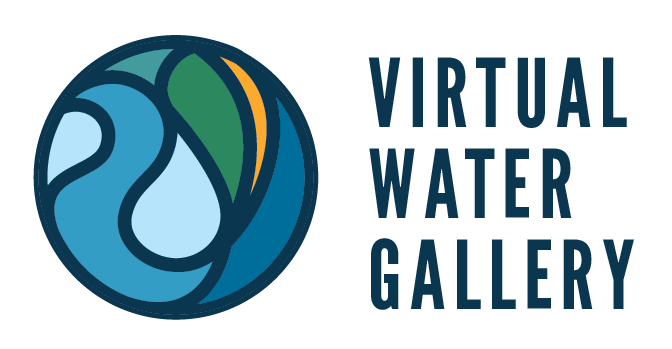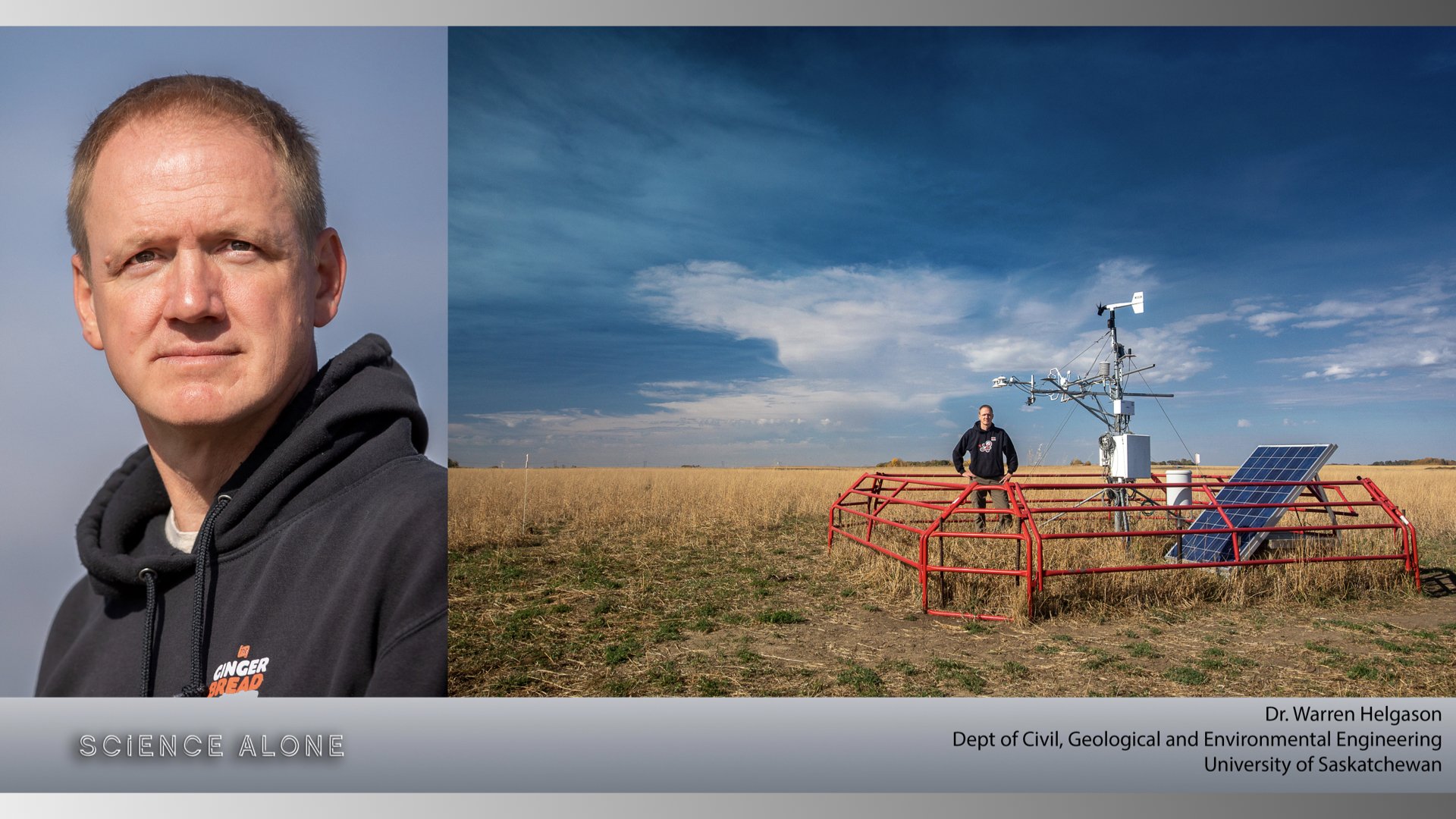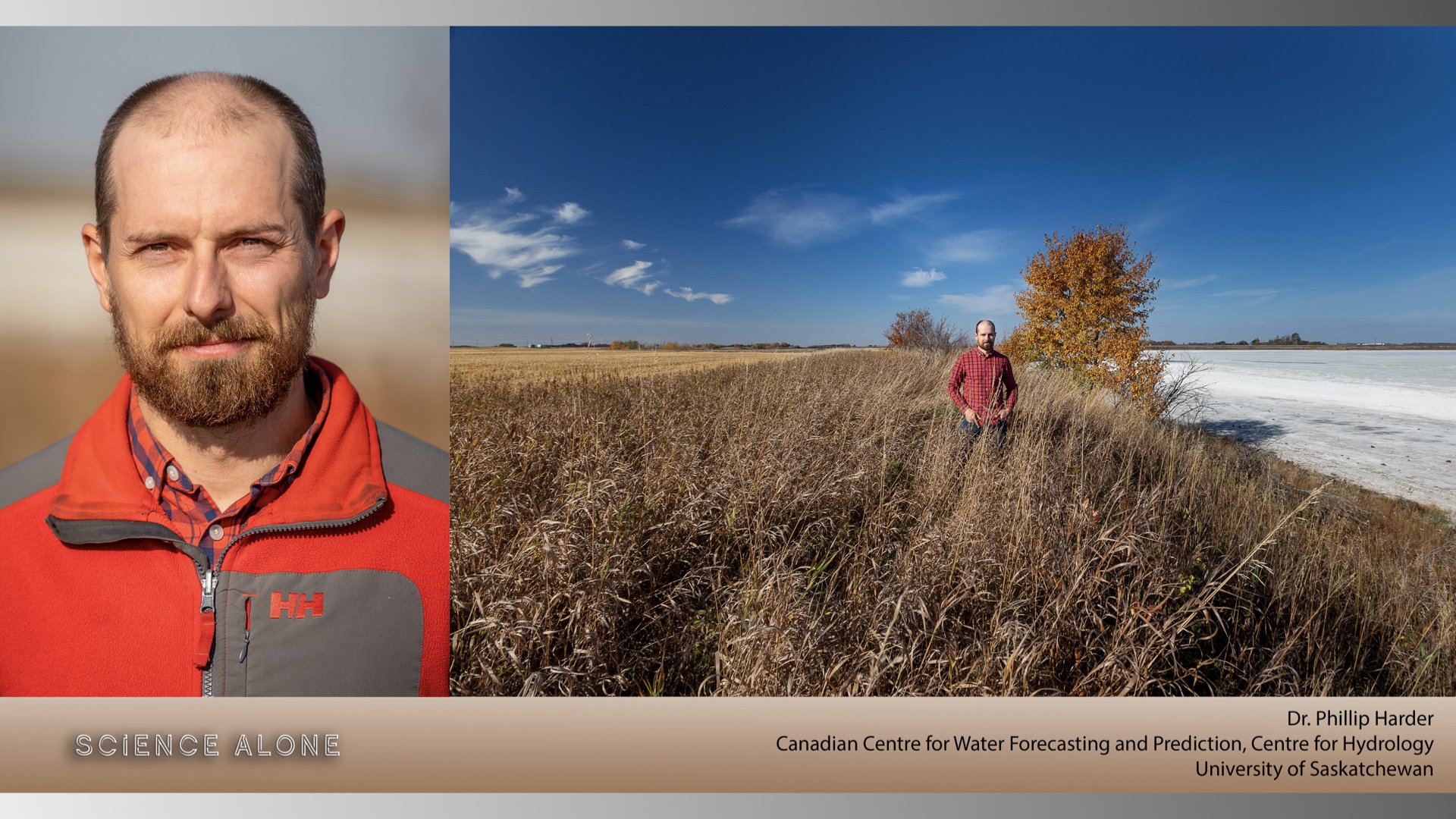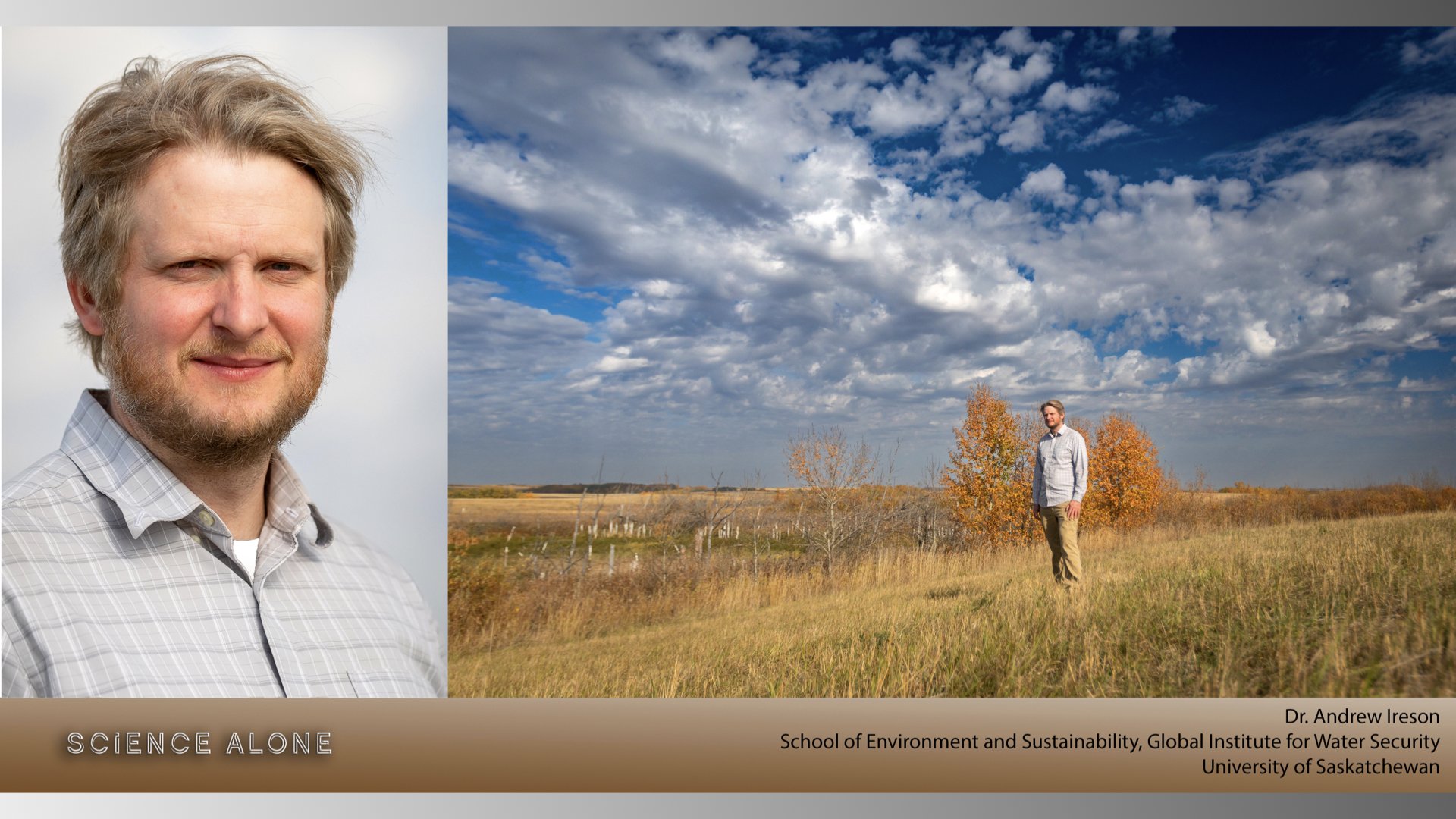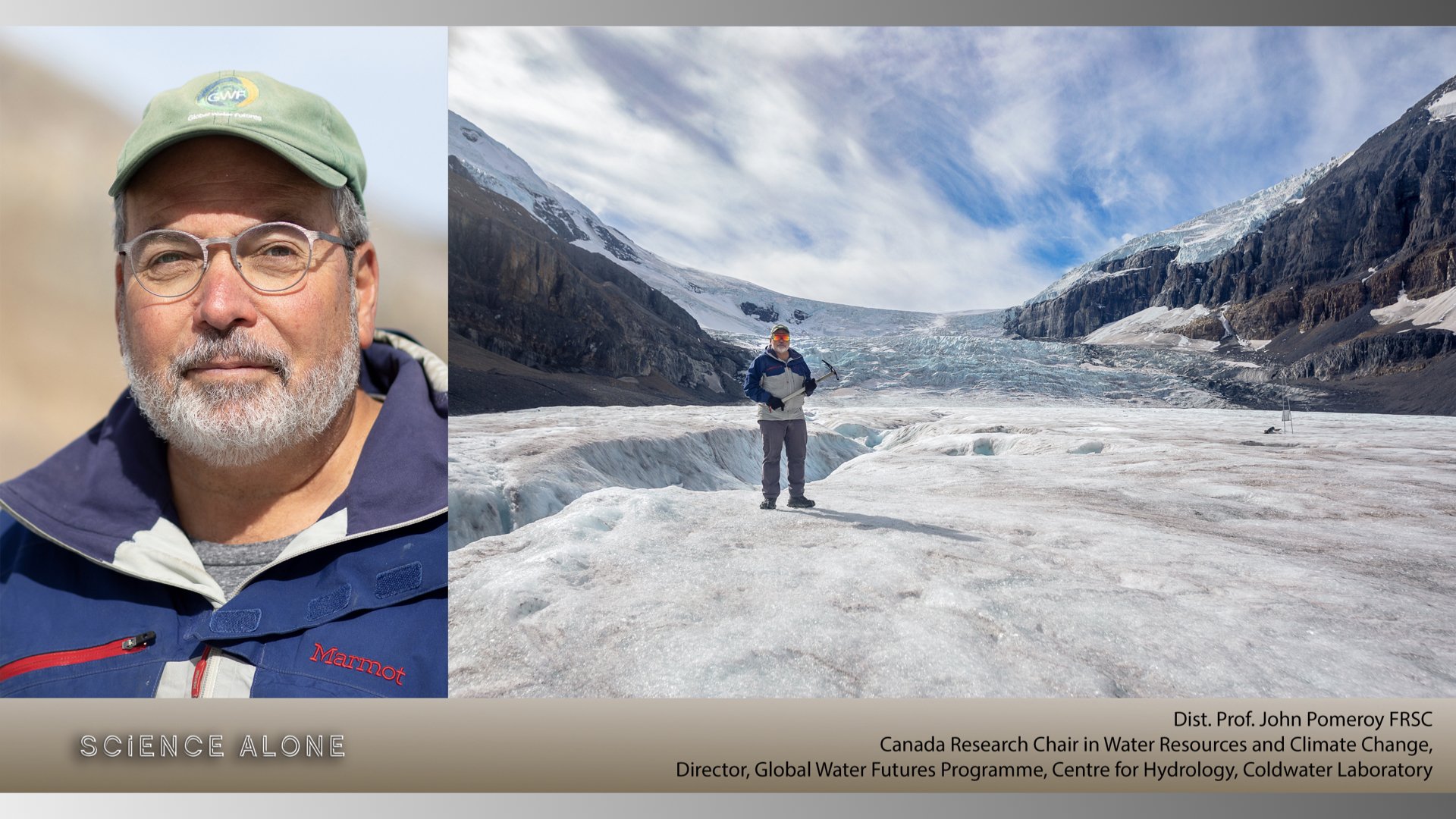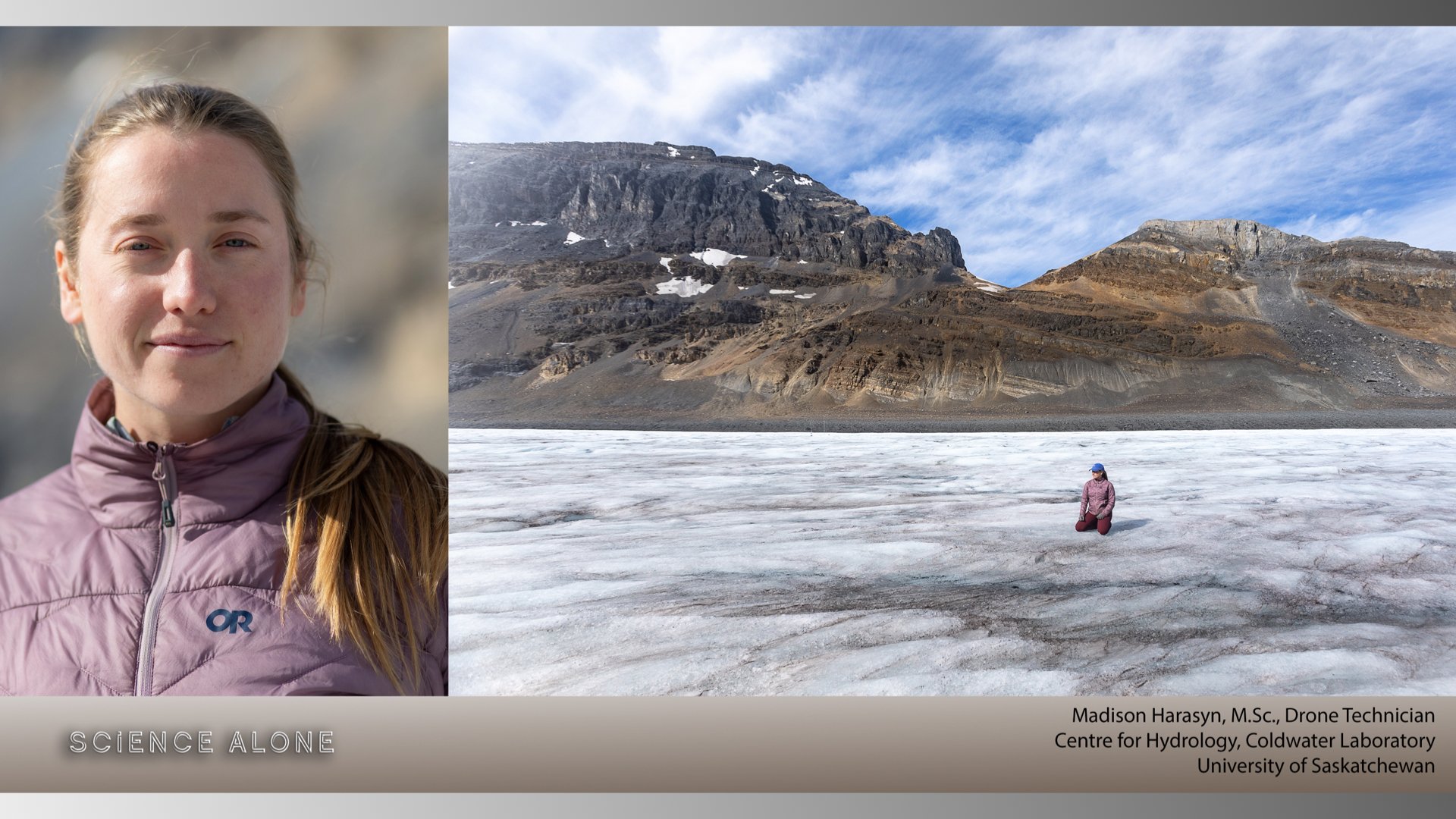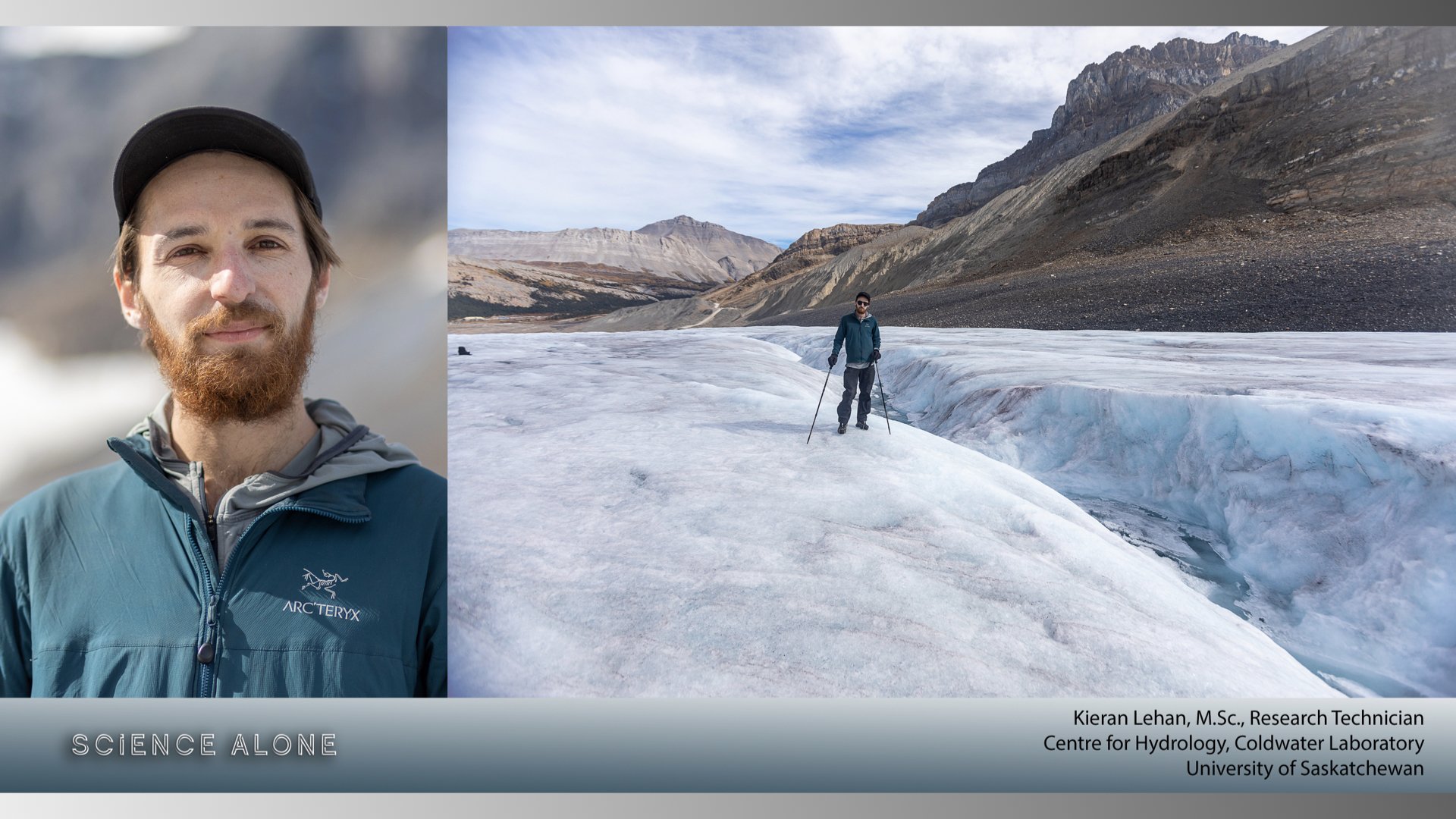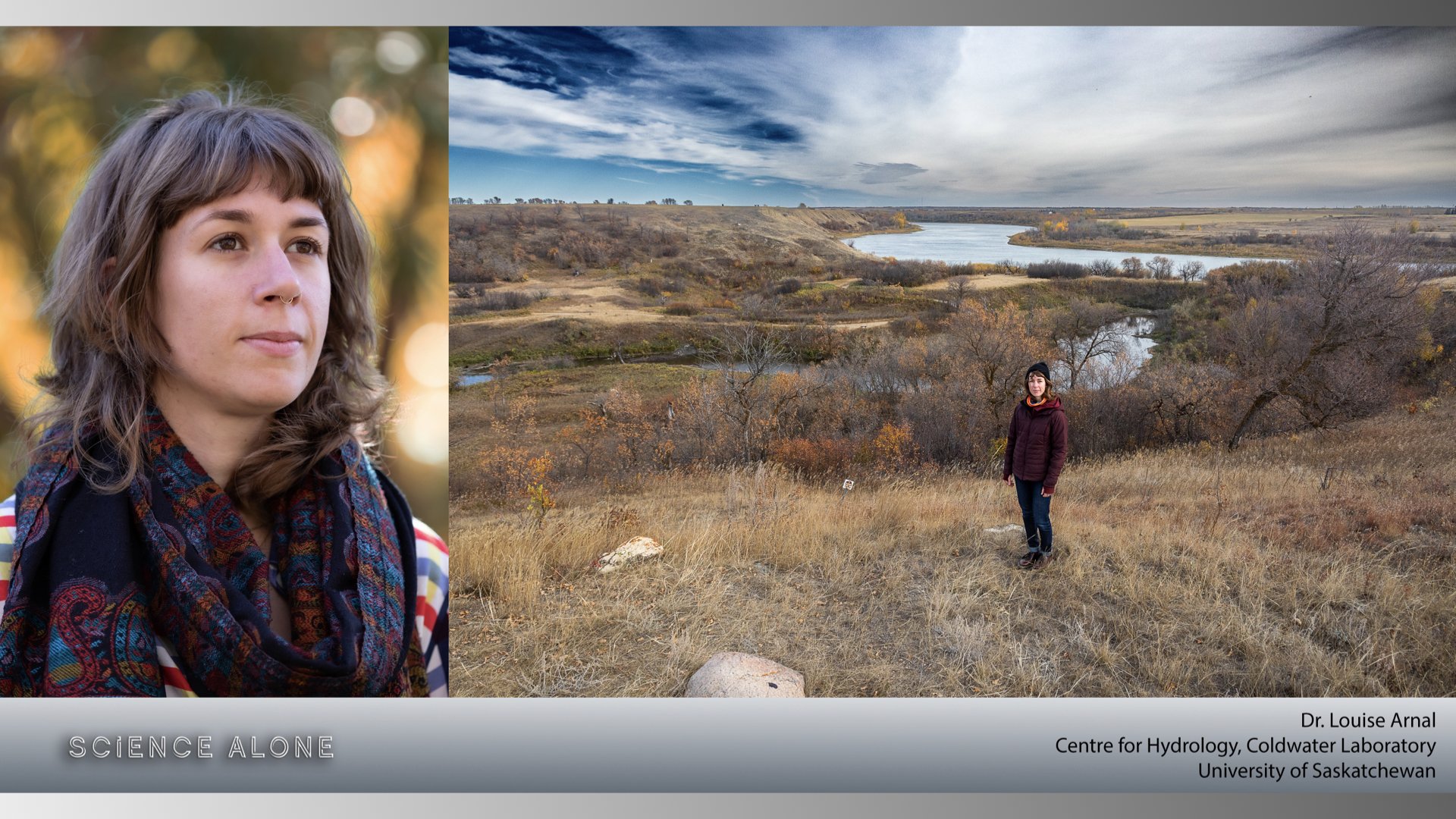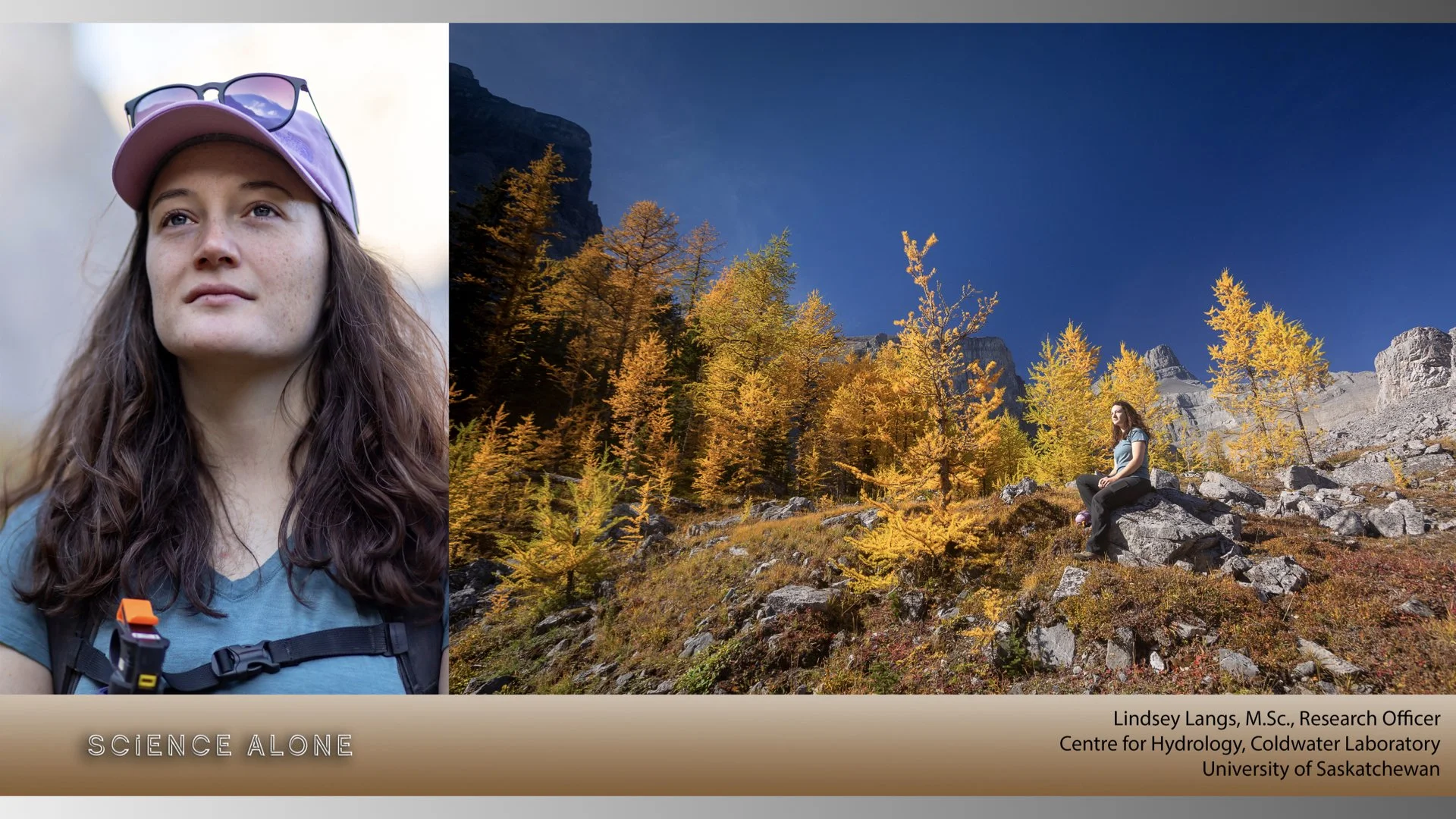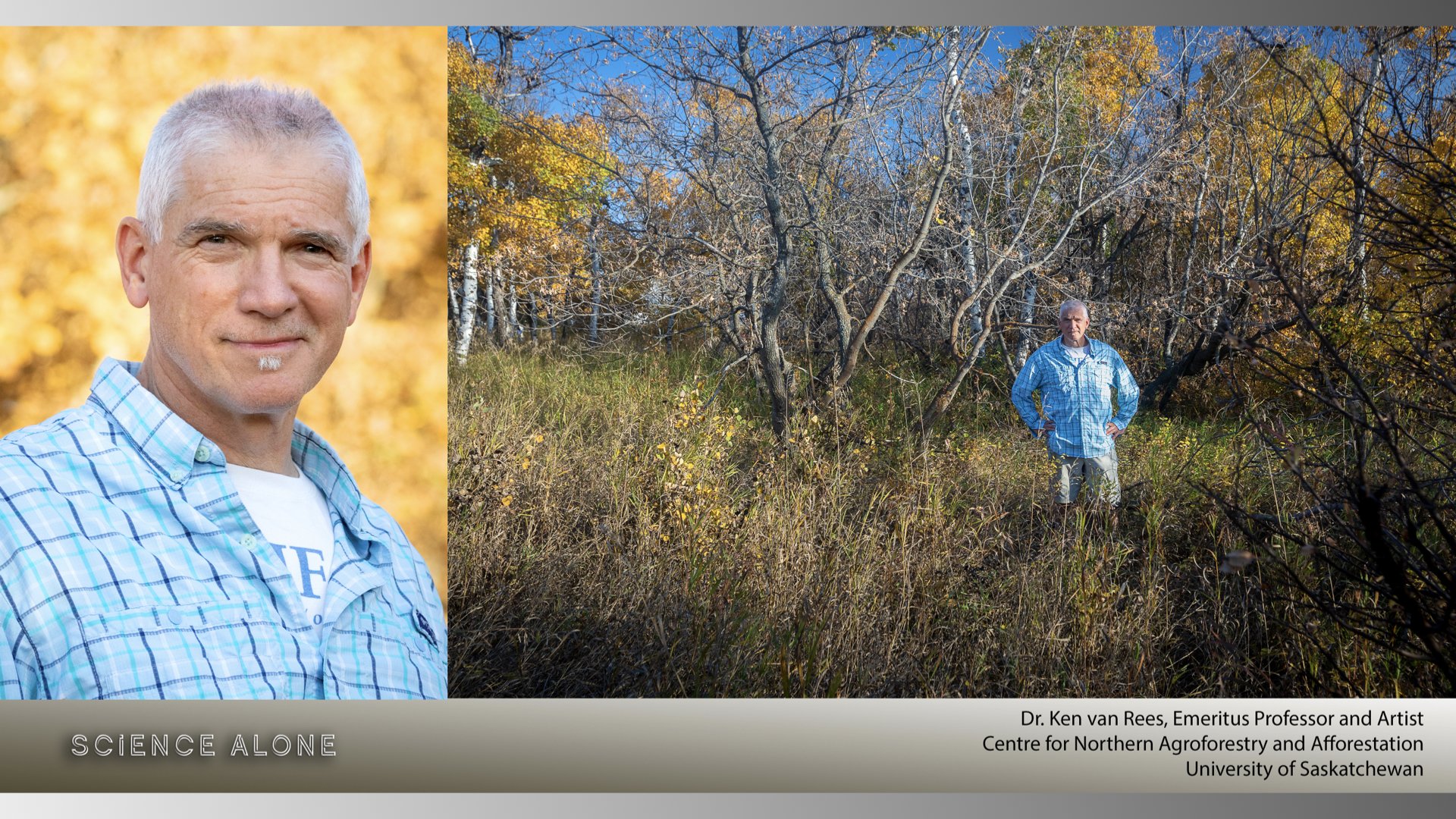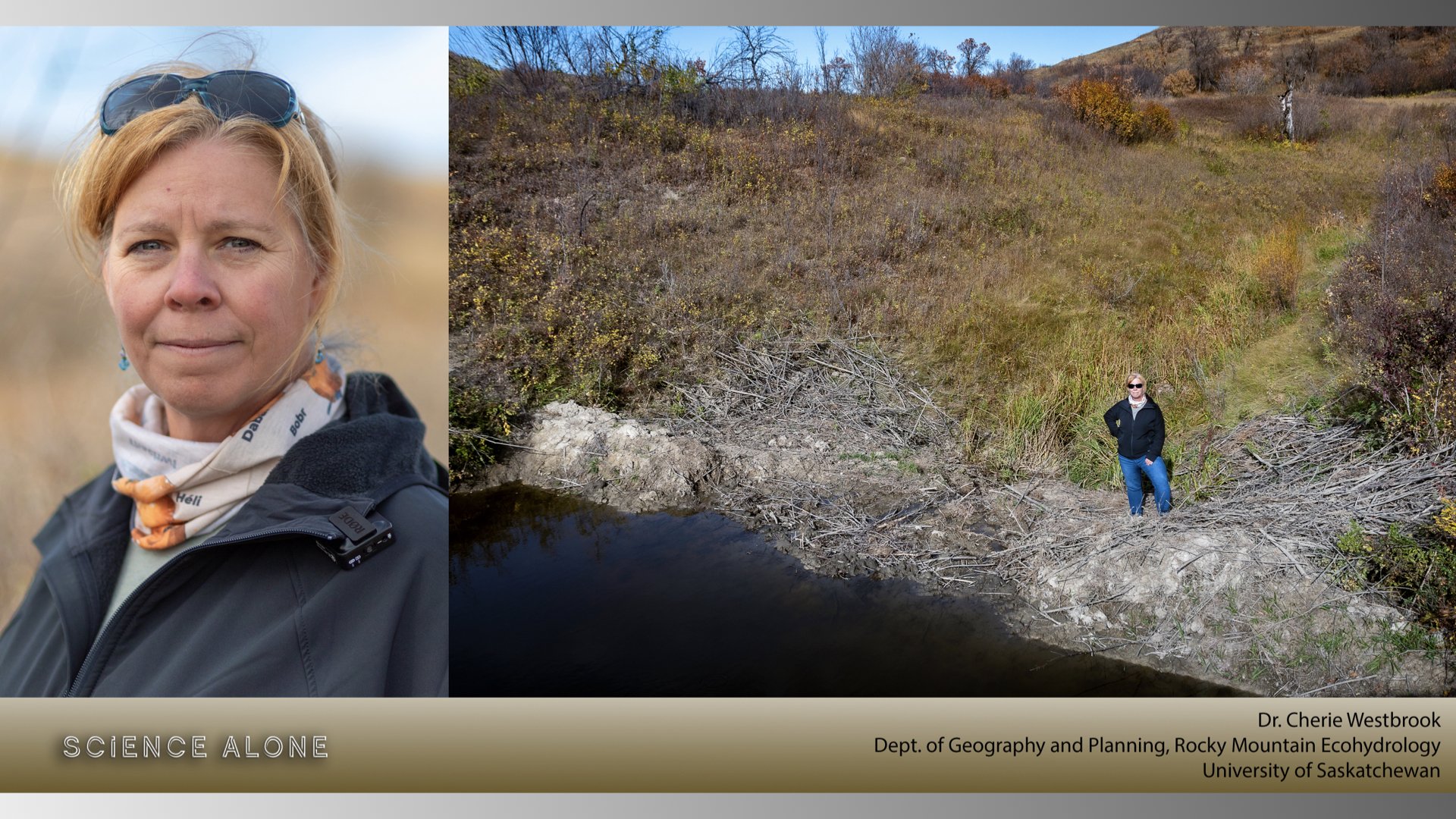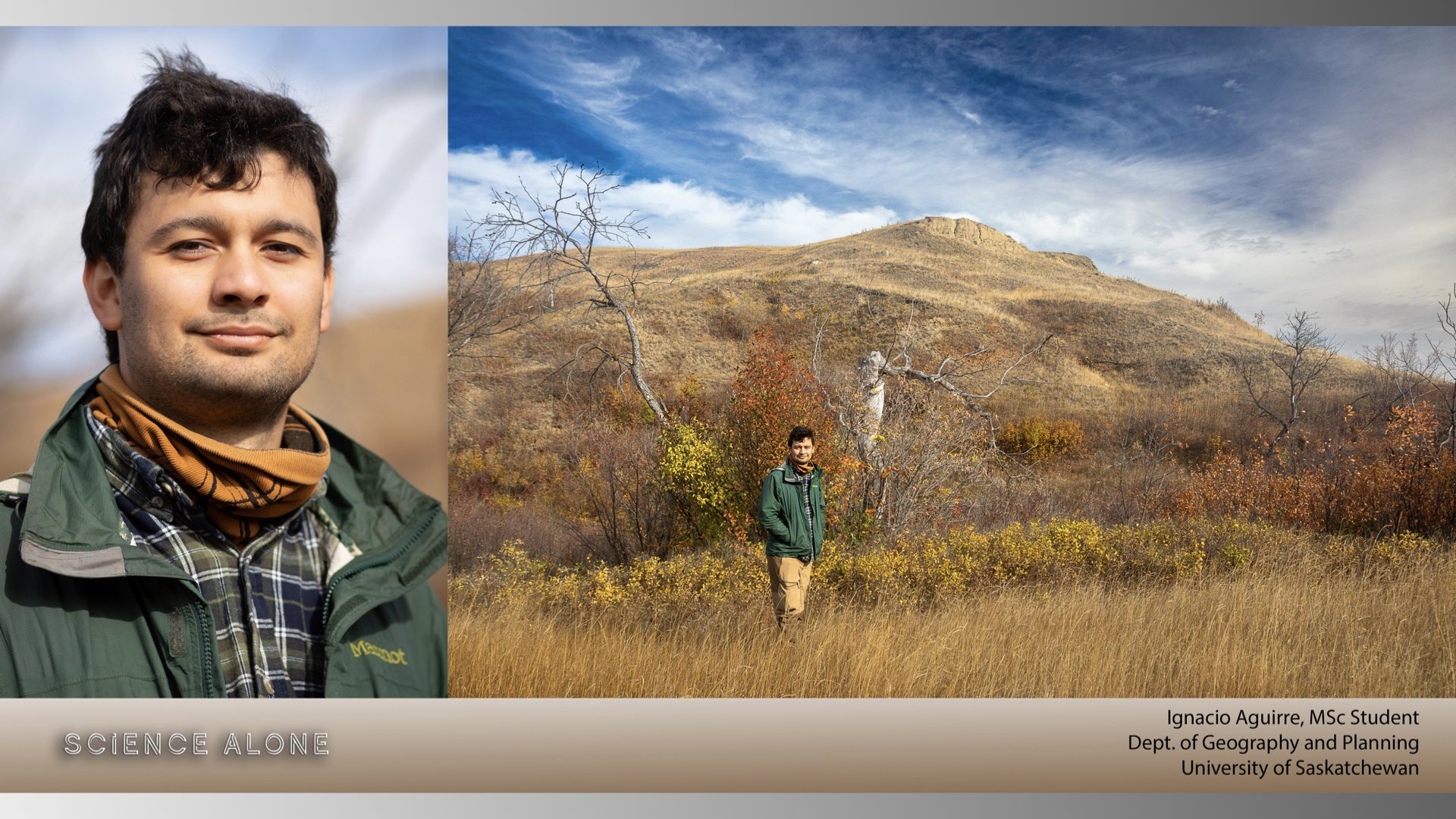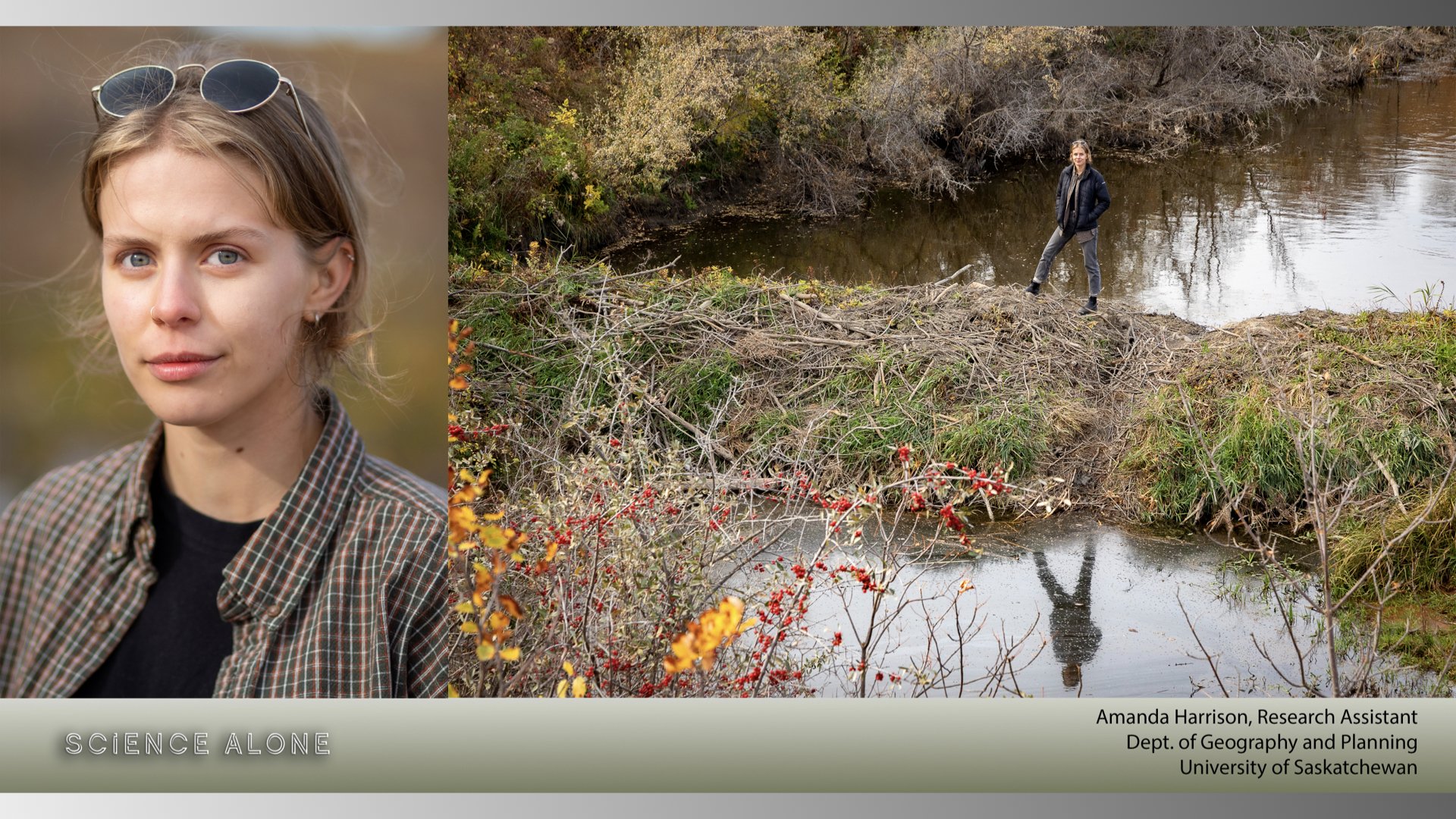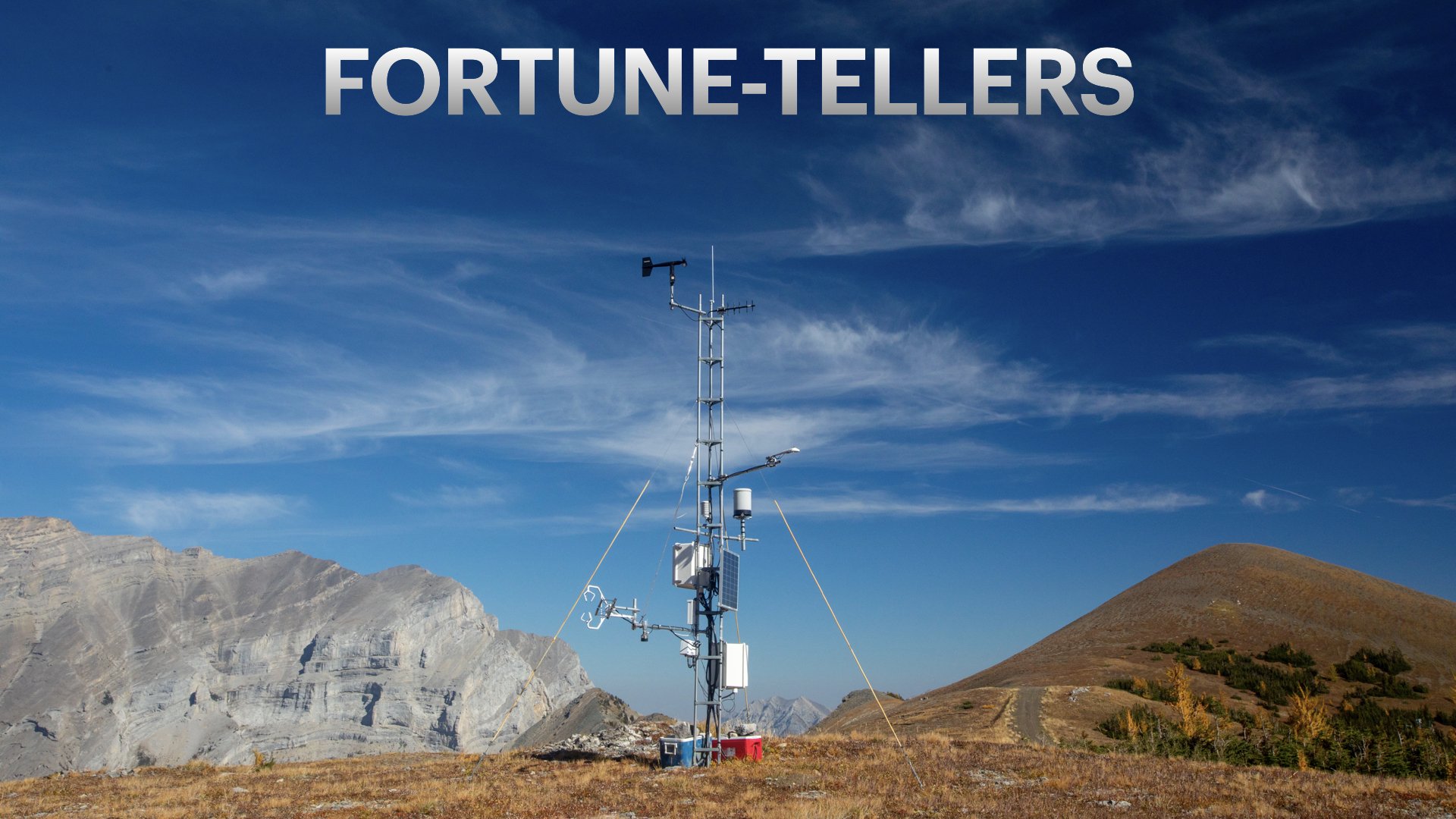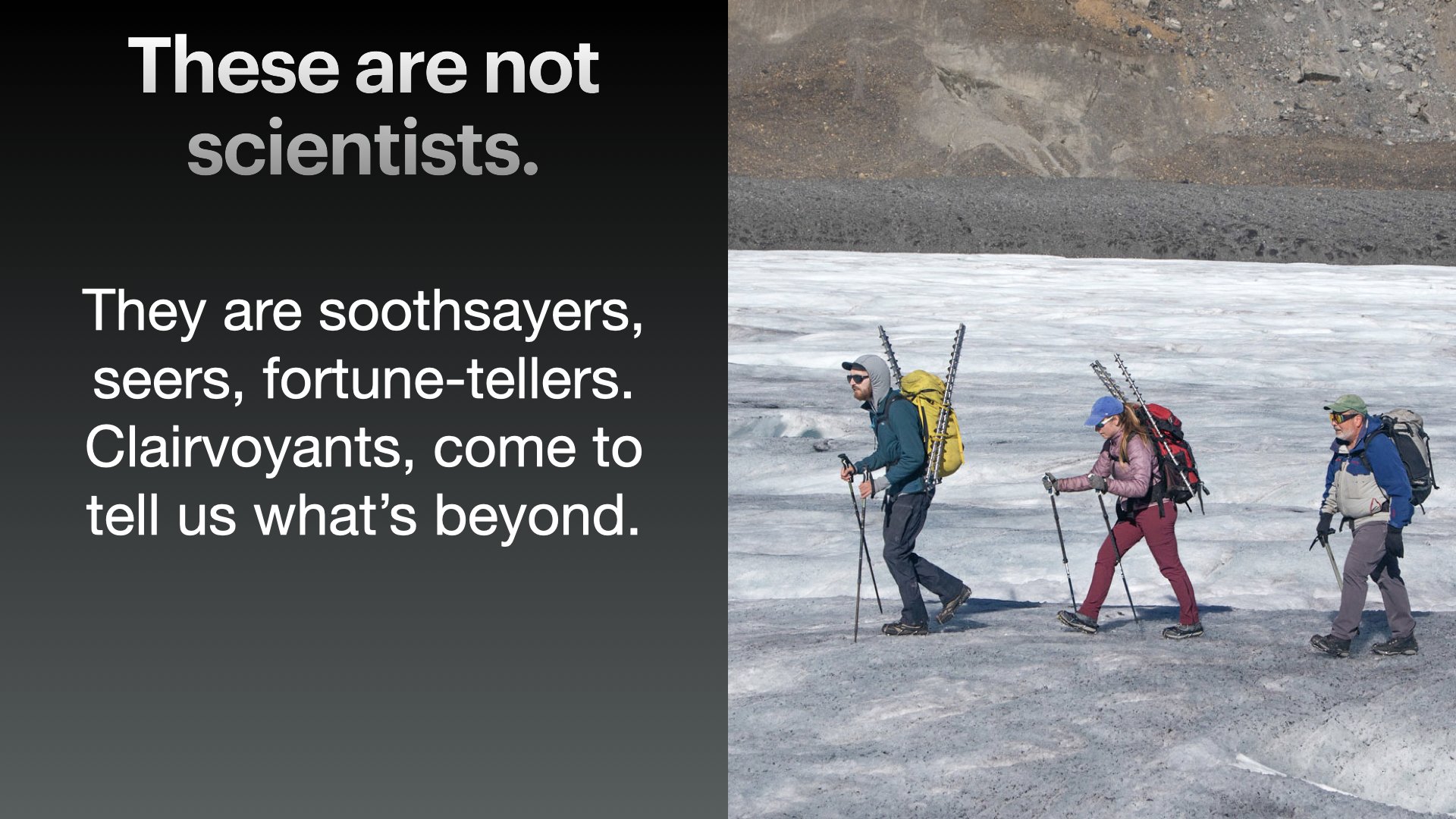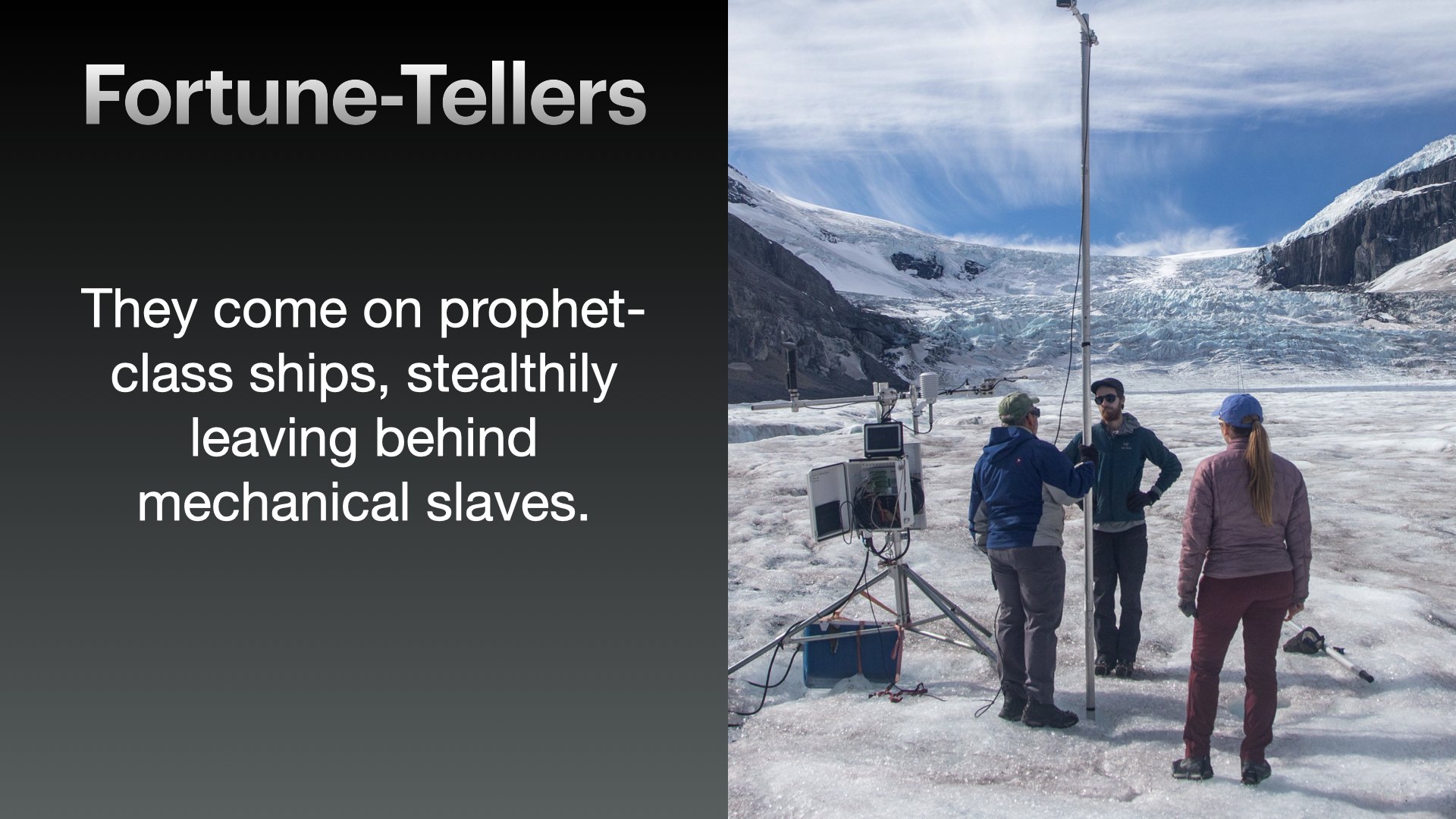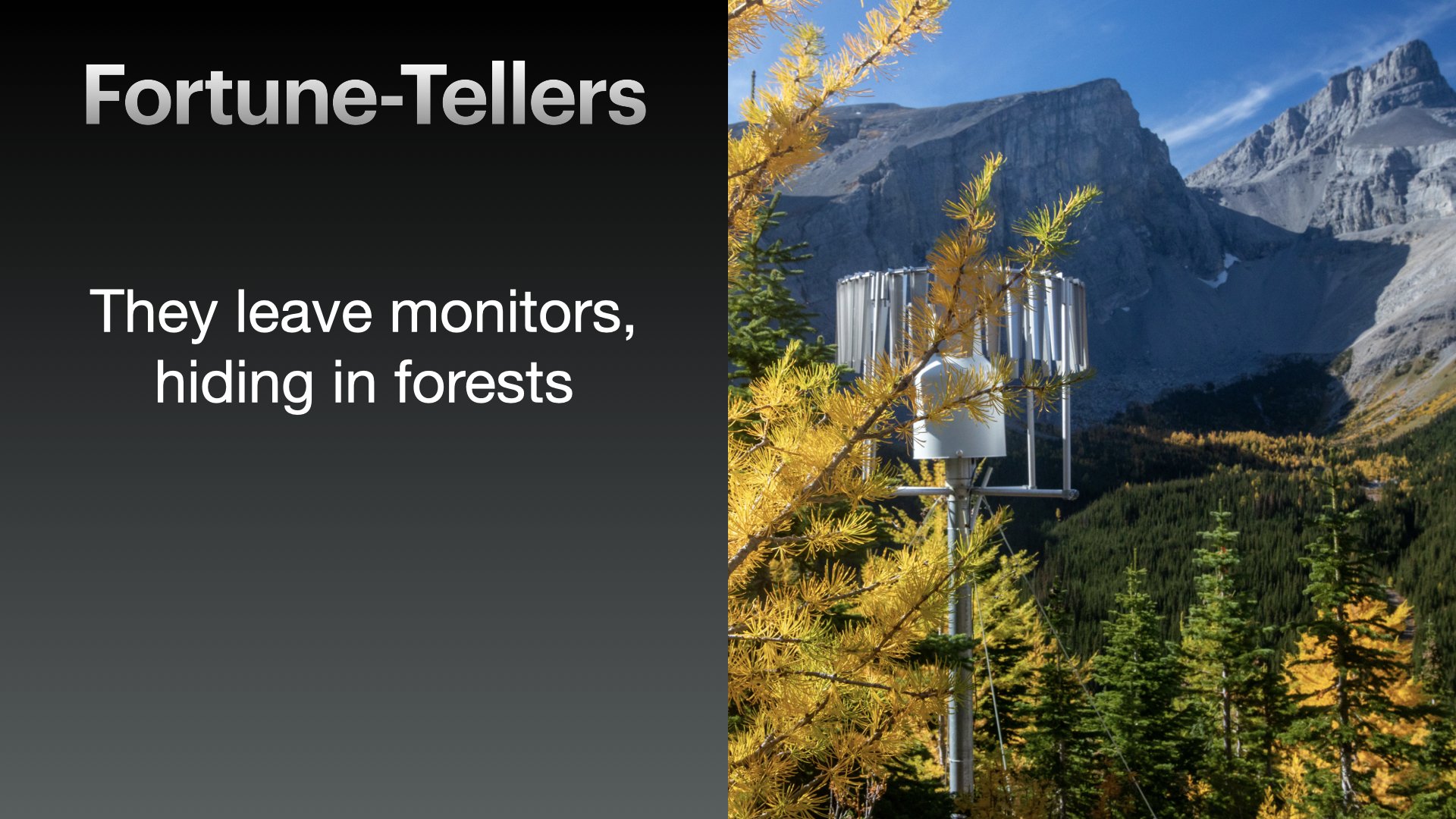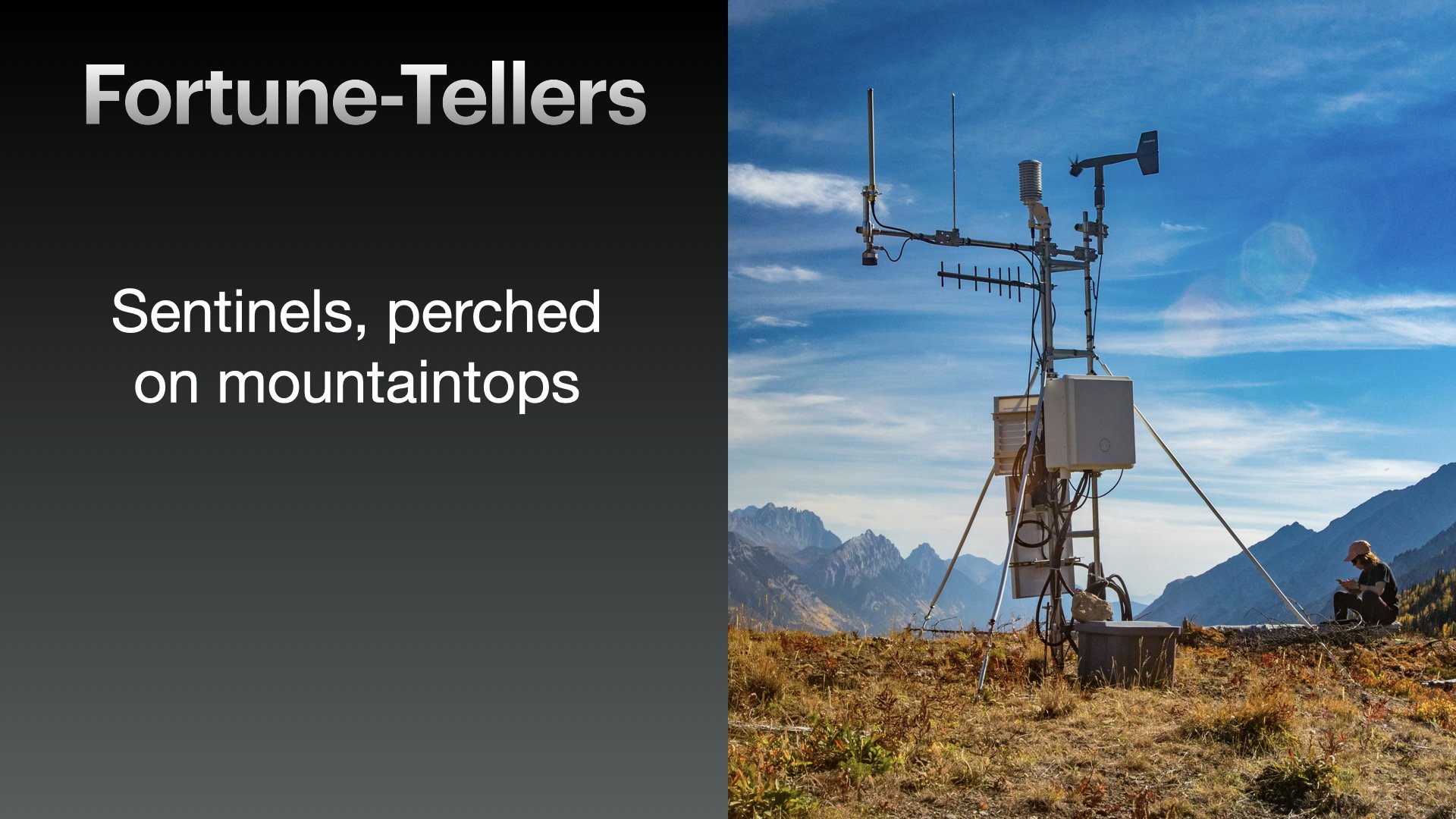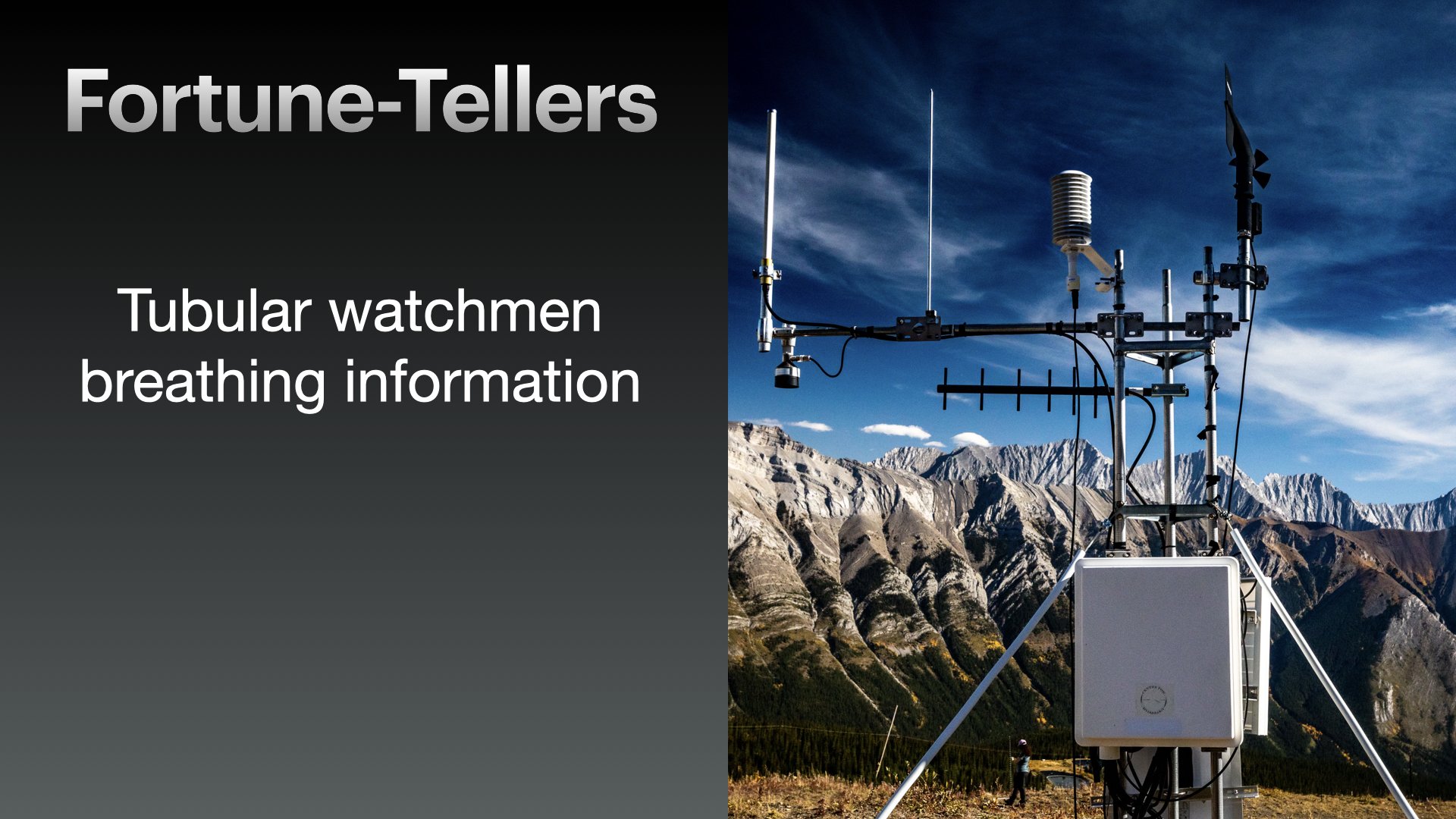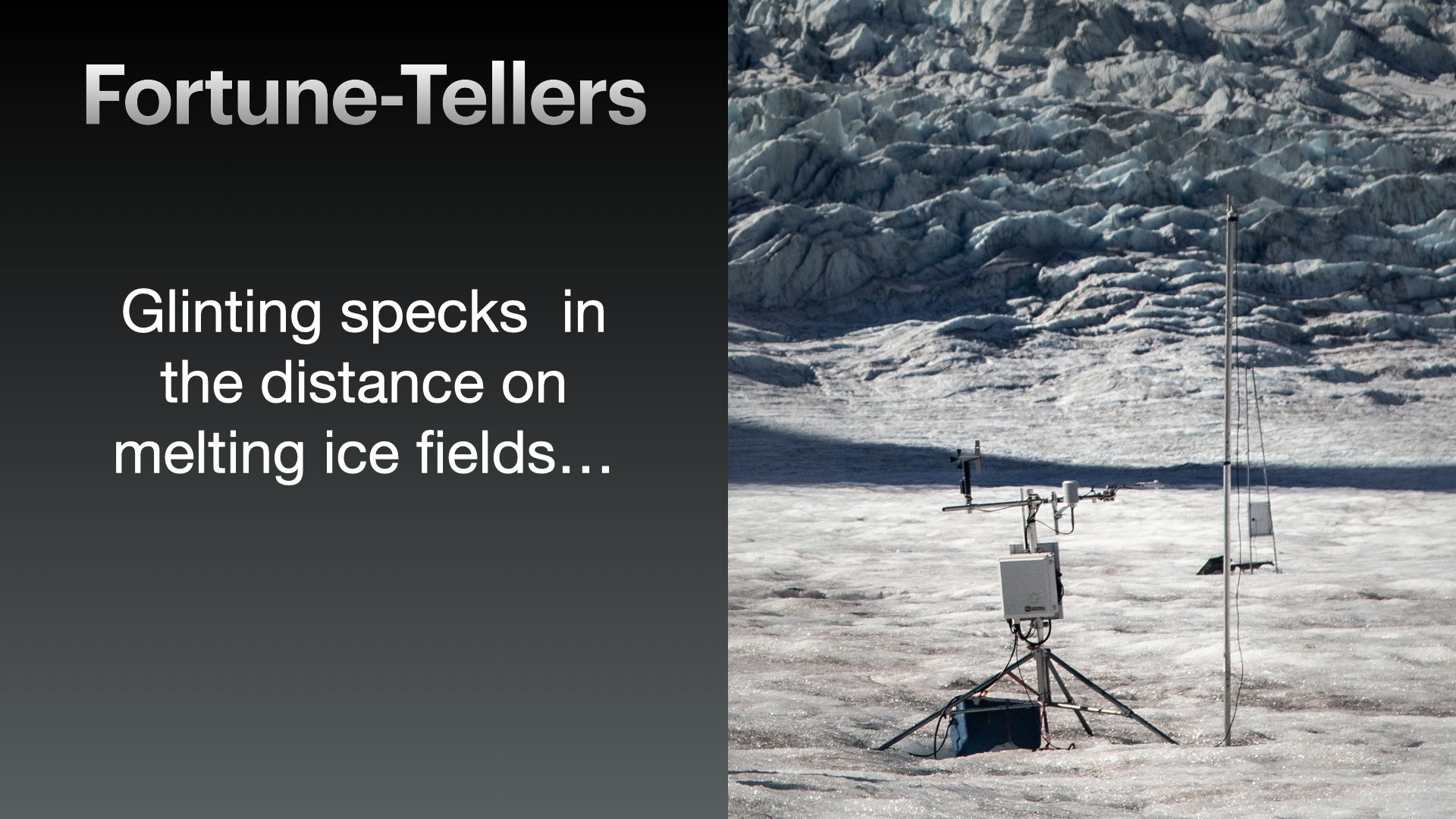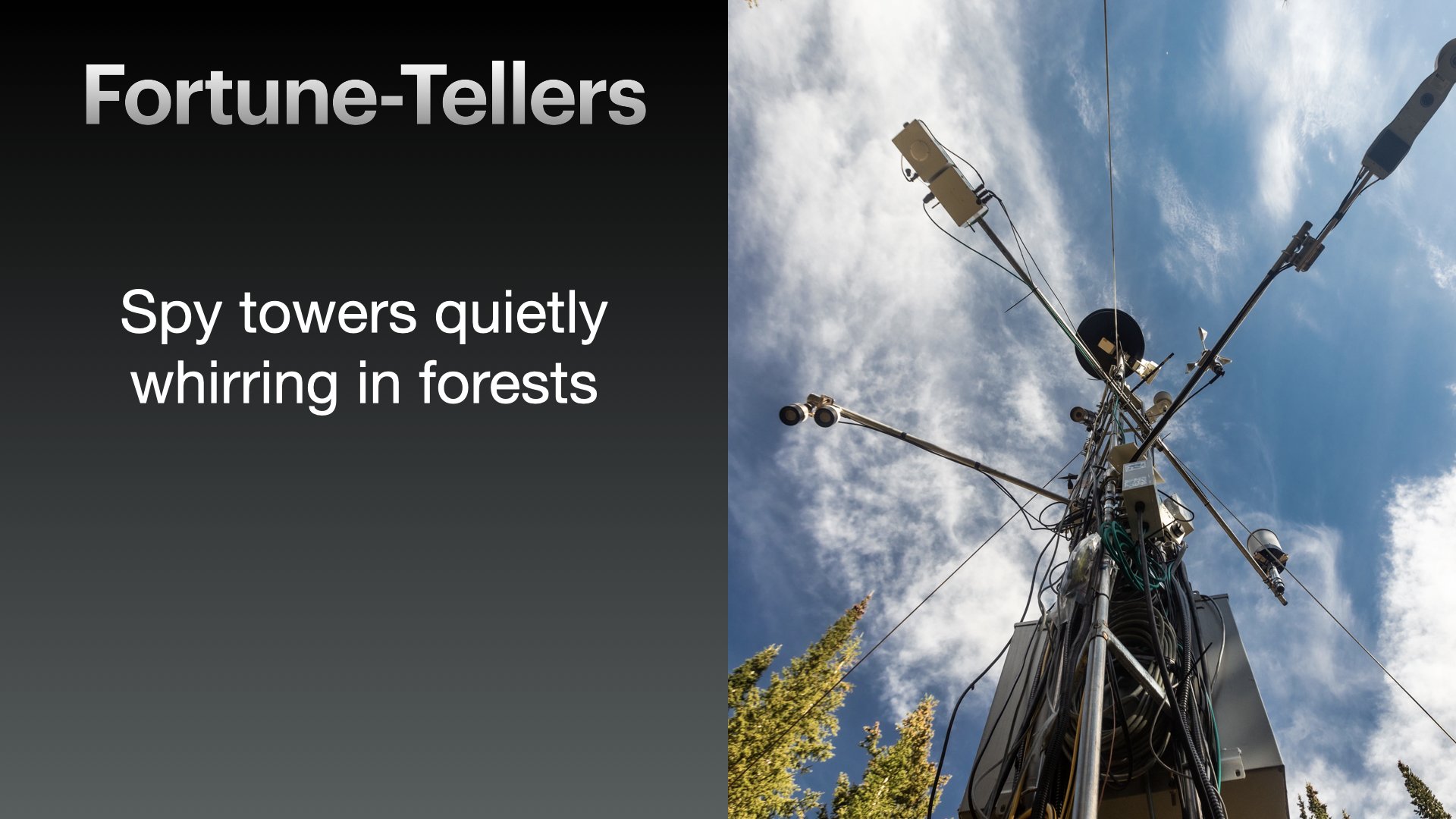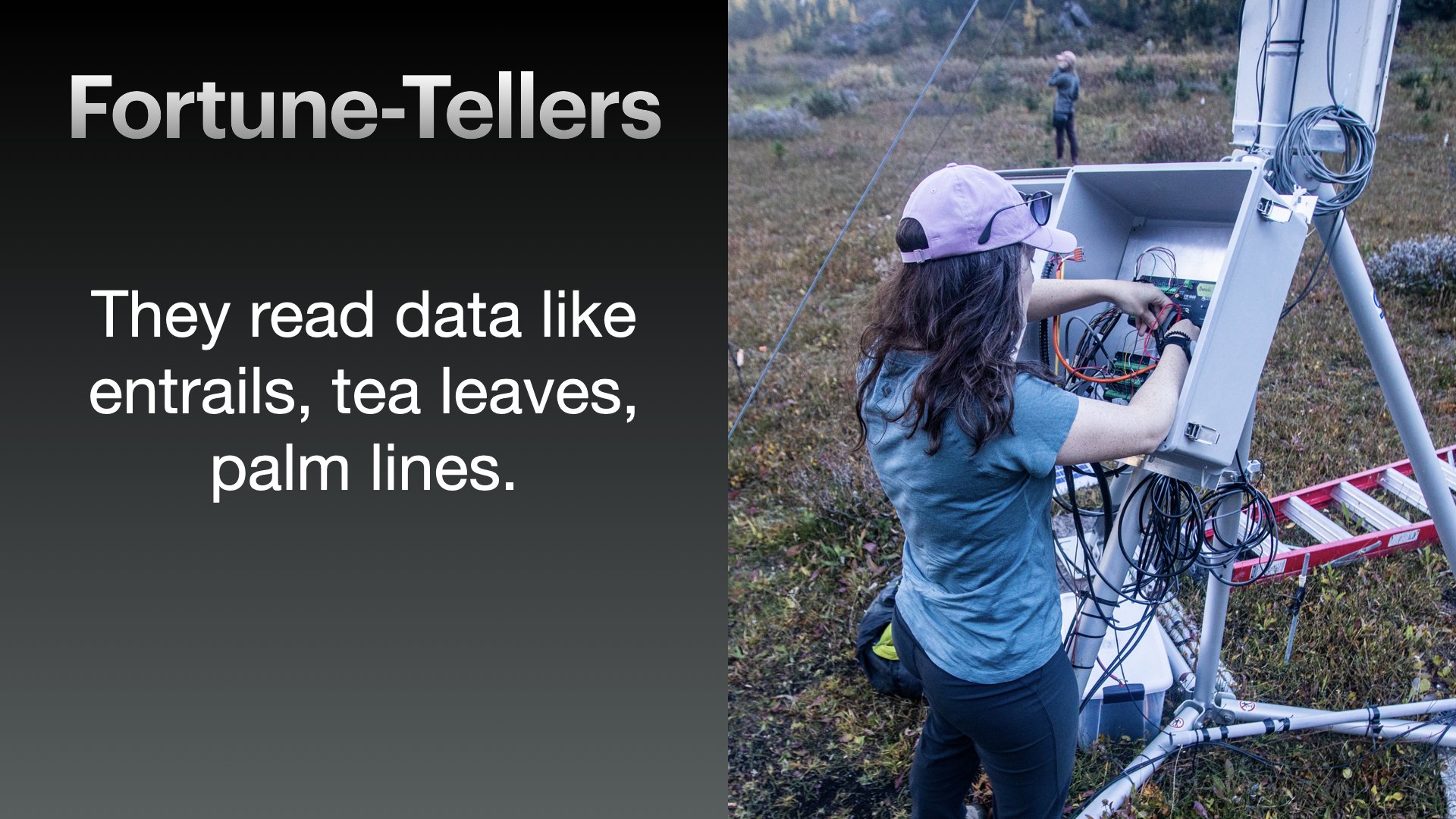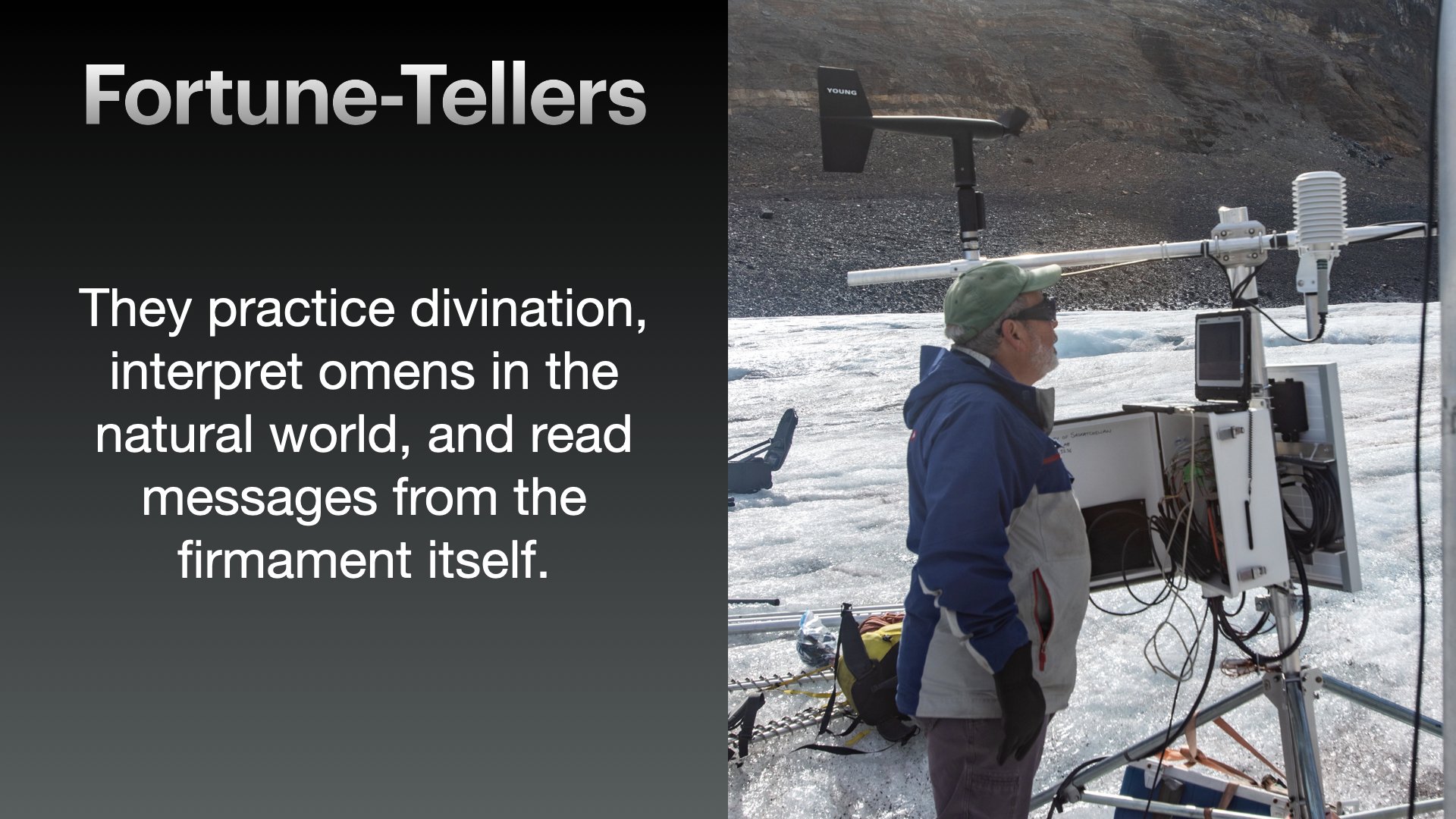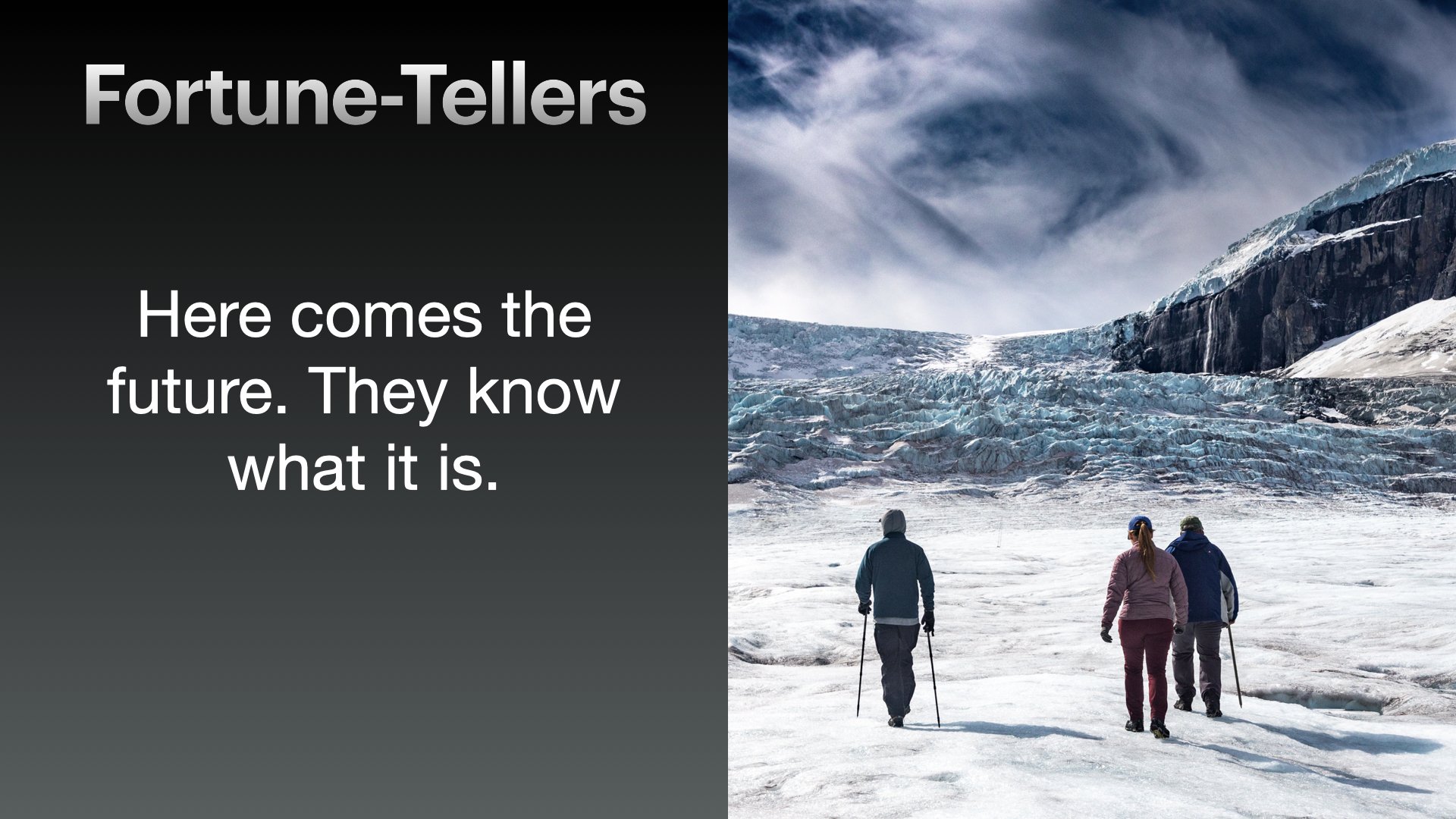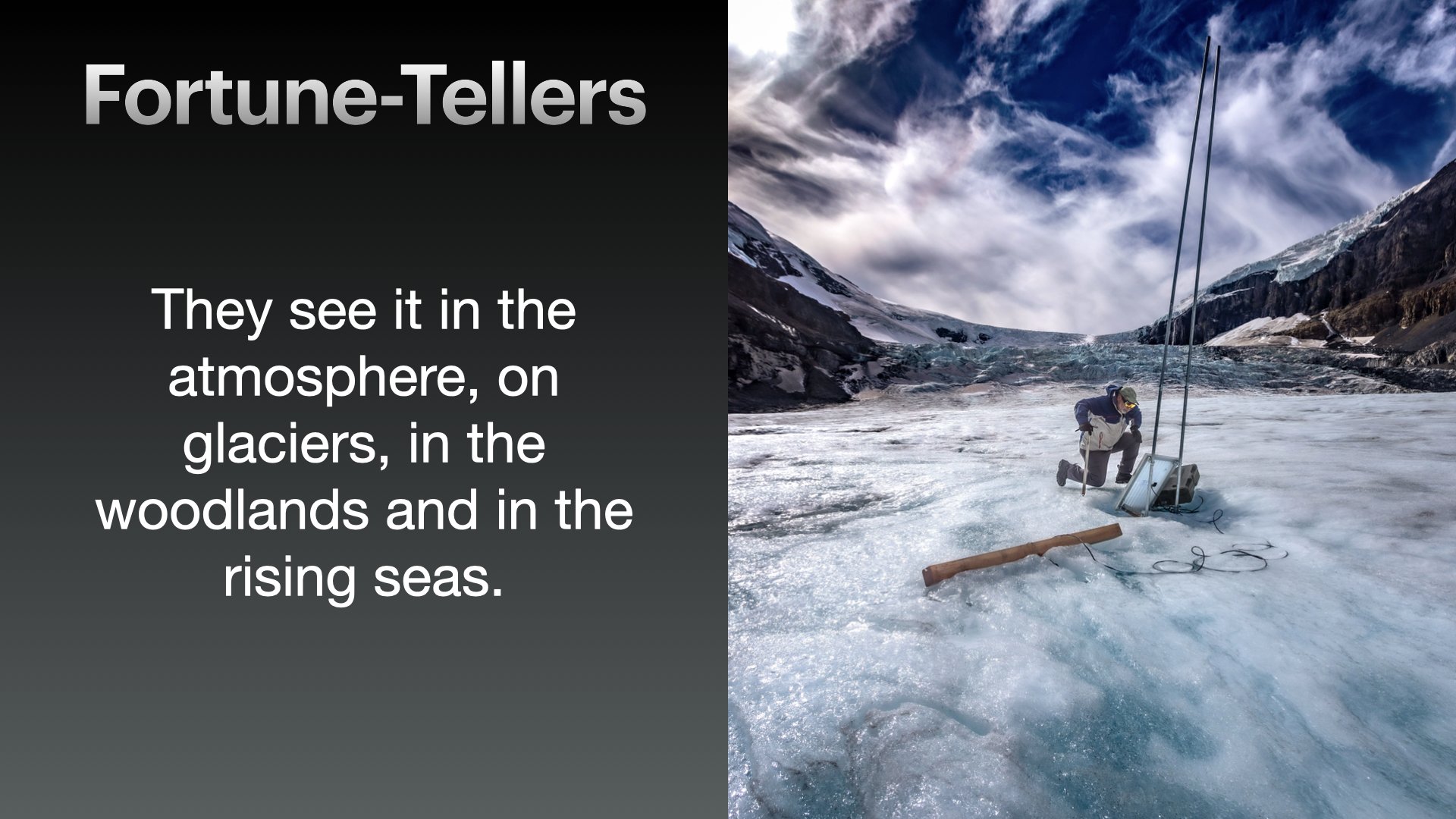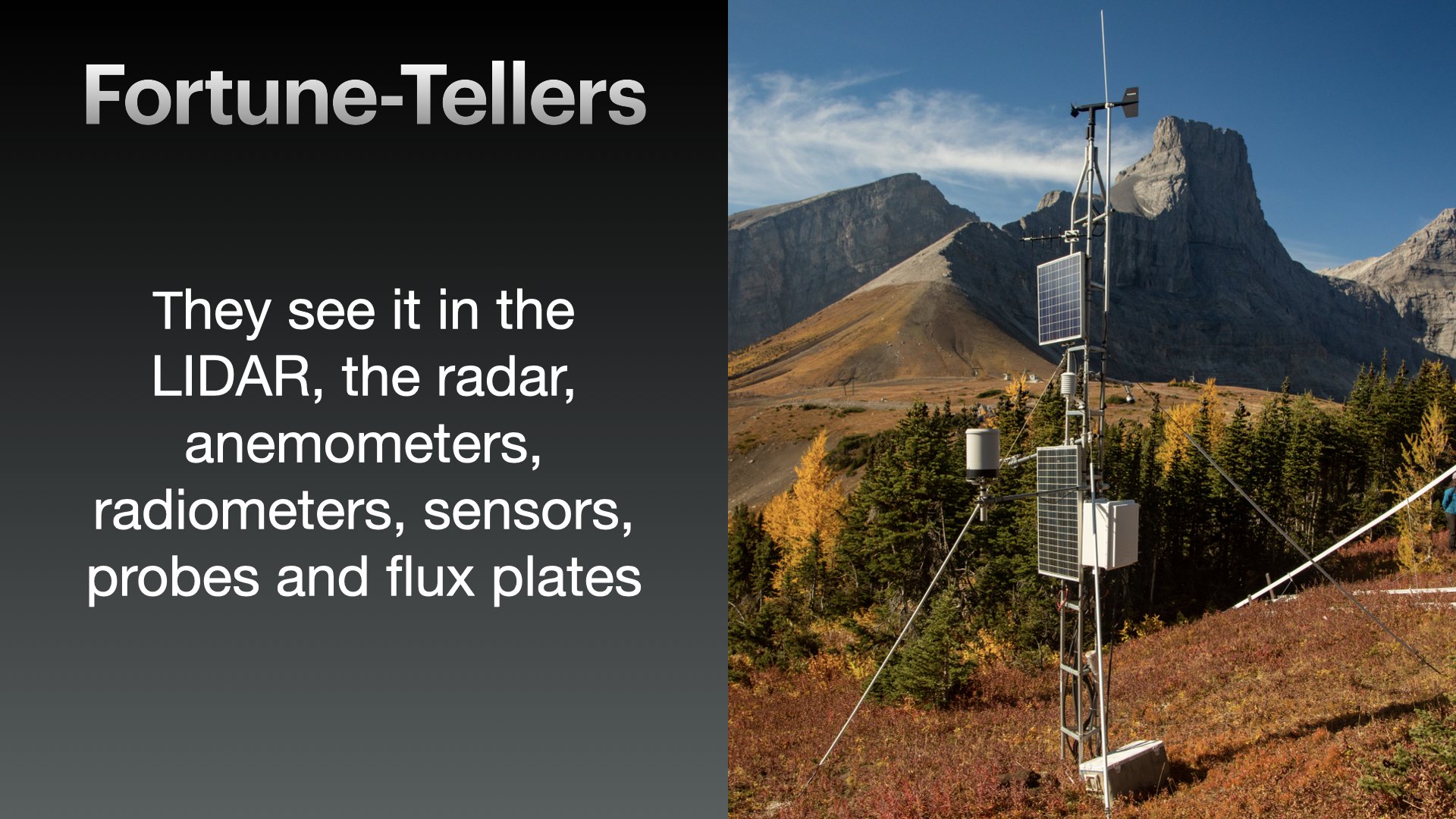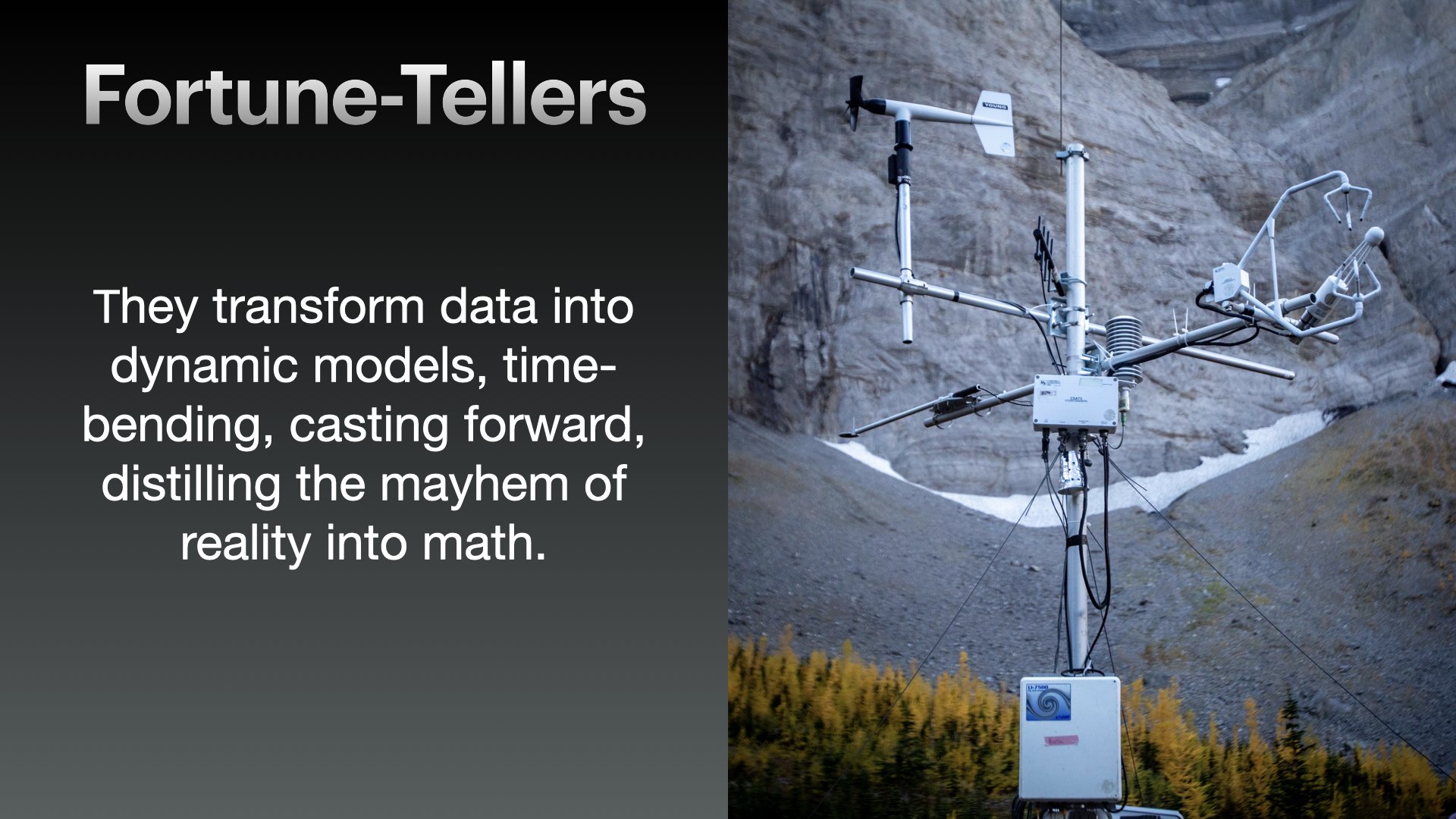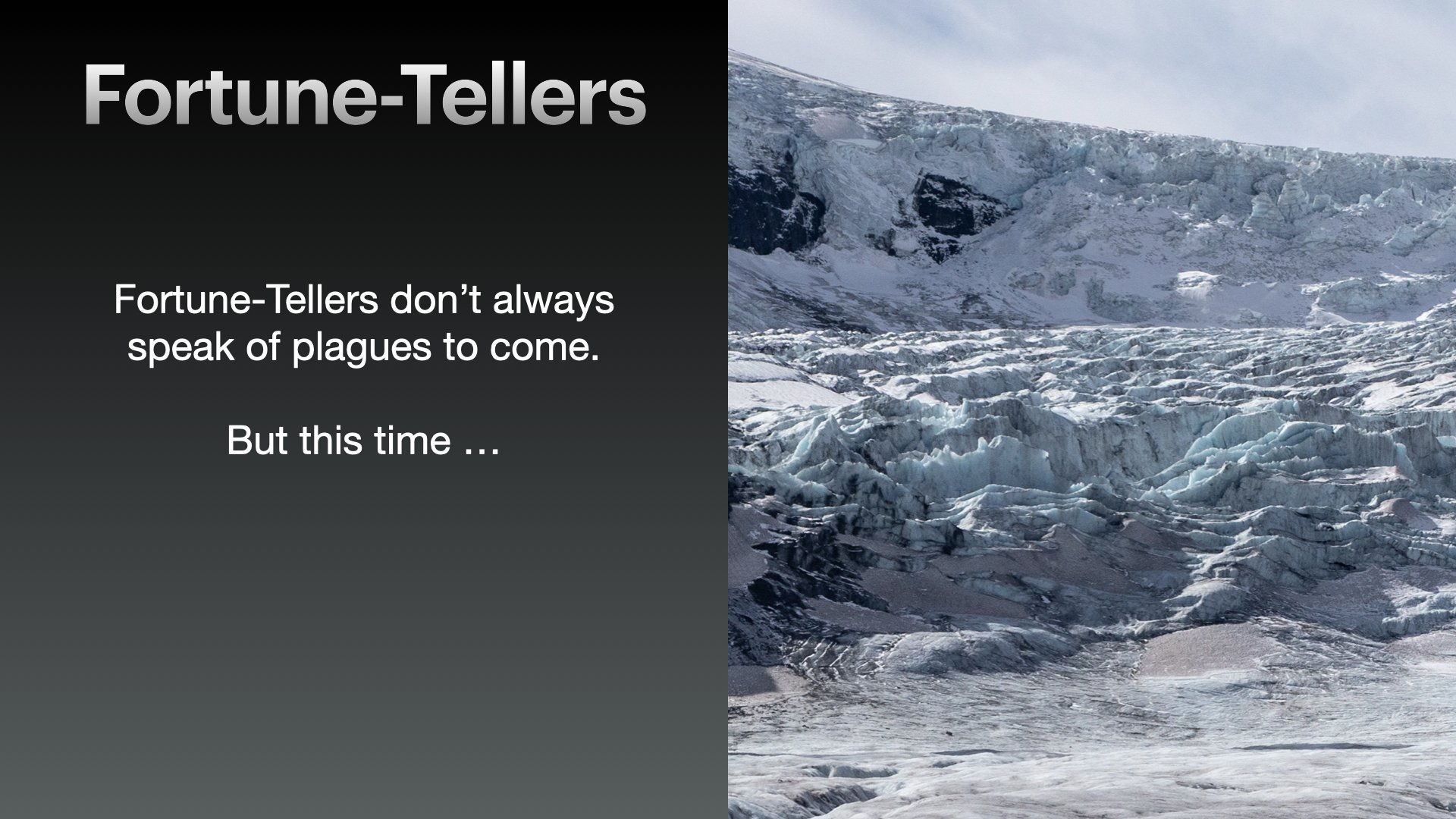Behind the Science
Unlike other artists represented in the Virtual Water Gallery, I was not paired with one single researcher working on a single project. Instead, I spent two weeks visiting many scientists working on a variety of projects. I found them all to be fascinating people with amazing stories to tell. As a result, I have two photo-based projects that focus on the scientists as individuals rather than on any particular research. They are “Science Alone” and “Fortune Tellers”.
Science Alone
“Science Alone” is a series of portraits of the scientists and science workers whom I met at the Coldwater Laboratory in Canmore and the Centre for Hydrology at the University of Saskatchewan. The title is meant to refer to the unique positions of these researchers. They are in a race against time, in a battle against apathy and ignorance, in a fight for resources, and in a constant struggle to be heard by global leaders, policy-makers, legislators, regulators, and the general public. Scientists can see the unfolding crisis from an entirely unique perspective. They understand, perhaps more deeply than any of us, the danger of our current path. Scientists are amassing the evidence needed to support the case for action, but as one leading researcher recently told me, it often feels like “no one is listening.”
Paradoxically, despite this continuous fight to be heard, there is also a widespread faith that science alone can, and will, fix things. Most believe that the solutions to our ecological problems are technical, involving the development of new technologies and breakthrough science that will wrestle the crisis to the ground. Of course this is unrealistic. Deep cultural, social and economic transformations are required as well, but many are unwilling to make such changes, and are happy to place the burden solely on the scientific community.
Science is indeed alone in having to navigate these difficult and contradictory conditions.
Fortune-Tellers
Among the foremost objectives of Global Water Futures is improving our understanding of what lies ahead. Predicting the future is an ancient tradition with a storied past. In the Judaeo-Christian Bible, for instance, there were about 40 prophets listed, all of whom read the signs and railed on about the future. Sadly, most of them were ignored, some were even killed. Let’s hope for a better outcome for our brave band of GWF scientists.
As part of this science-art project, Sam Baardman journeyed through diverse research sites, from the Athabasca glacier and the Fortress Mountain Research Basin in Alberta, to the Clavet Livestock and Forage Centre of Excellence, St. Denis National Wildlife Area and Wanuskewin Heritage Park in Saskatchewan. Scientists at these locations delve into the intricacies of water and ecosystems, studying snowpack changes, glacier melt, groundwater flow, and beaver dams. This research aims to understand changes and their impacts on society, influencing aspects like drinking water availability, agriculture, and landscapes management. Sam captured firsthand insights from scientists during his visits. Explore testimonials from some of the scientists who shared a day in the field with Sam during his visit:
“As Sam and I trekked across Athabasca glacier, we chatted about using drone technology to monitor the rapid recession of glaciers in the Rocky Mountains, and how drones provided a different vantage point for looking at our changing world. While hiking across a glacier, its easy to see the effects of climate change from the rapid run off of glacial melt water and cracking ice at the toe of the glacier, however the magnitude of change becomes much clearer when you can see a bird’s eye view of the collapse of a glacier.” - Madison Harasyn
”Fortress Mountain Research Basin has been an integral part of understanding mountain hydrology in the Canadian Rockies. Spending the day with Louise and Sam showcasing the history of this area and our research operations within was very special after my 9 years of research involvement here. Spending time at Fortress and its field sites is inspiring, thought provoking and provides a great setting for connecting the public with science.” - Lindsey Langs
Several of these research sites are part of a broader network, and you can discover additional information about it here.
Sam Baardman is a singer-songwriter and photographer living in Winnipeg, Manitoba. He is a co-founder of “River on the Run”, a group of artists that creates work based on their shared experience of living within the Lake Winnipeg watershed. Integrating a variety of art forms and disciplines, and working in collaboration with biologists and climate scientists, their work investigates the increasingly fragile relationship between humans and their habitats. Environmentalism has been an enduring theme both in Sam’s music and visual art. His music is known for its lyrical depth and superb, singable melodies, while his photography has been exhibited in galleries in both Canada and the U.S.
Louise Arnal is a water scientist with a lifelong love of art. She is a postdoctoral fellow with Global Water Futures, as part of which she is leading the Virtual Water Gallery project. She enjoys exploring water-related topics using scientific tools on her computer and a diversity of artistic media (from watercolour paintings to multi-sensory immersive installations). You can see some of Louise's science and art projects on her website and connect with her on Twitter and on Instagram.
Professor John Pomeroy is a Distinguished Professor in the Dept. of Geography & Planning, the Canada Research Chair in Water Resources and Climate Change, the Director of the Global Water Futures Programme, and the Director of the University of Saskatchewan Coldwater Laboratory in Canmore (Alberta, Canada). His current research interests are on the impact of land use and climate change on cold regions hydrology and water quality, and improved prediction of climate change impacts, especially floods and droughts.
Contact Us!
Want to share your comments, questions or perspectives on this gallery and the themes explored? Please Contact Us!
The Virtual Water Gallery team is committed to providing a safe, respectful, harassment-free, and accessible space for all. We do not tolerate harassment of any member of society.
